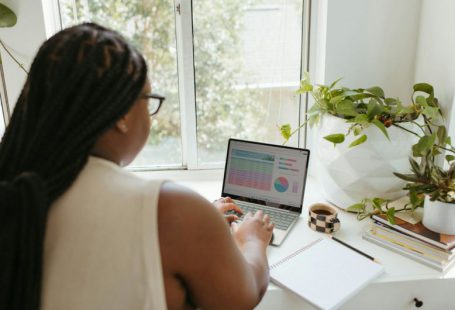Forex trading, also known as foreign exchange trading, is the buying and selling of currencies on the foreign exchange market. This decentralized market allows traders to speculate on the price movements of various currency pairs, making it the largest and most liquid financial market in the world. If you’re interested in getting started in forex trading, here’s what you need to know.
Understanding the Forex Market
The forex market operates 24 hours a day, five days a week, allowing traders to participate in global currency trading at any time. Currencies are traded in pairs, such as EUR/USD or GBP/JPY, where the first currency is the base currency and the second currency is the quote currency. The exchange rate between the two currencies determines the value of the pair.
Unlike the stock market, the forex market is decentralized, meaning there is no central exchange. Instead, trading takes place electronically over-the-counter (OTC), with transactions being conducted through a network of banks, financial institutions, and individual traders. This decentralized nature of the market ensures that there is always a buyer and a seller for any given currency pair.
Getting Started in Forex Trading
To begin forex trading, you’ll need to open a trading account with a reputable forex broker. It’s important to choose a broker that is regulated and offers a user-friendly trading platform. Look for brokers that provide educational resources, competitive spreads, and a variety of trading tools.
Once you’ve chosen a broker, you’ll need to fund your trading account. Most brokers require a minimum deposit to open an account, which can range from a few hundred to a few thousand dollars. It’s advisable to start with an amount you can afford to lose, as forex trading involves risks and losses are possible.
Developing a Trading Strategy
Before executing any trades, it’s crucial to develop a trading strategy. A trading strategy outlines your approach to the market and helps you make informed trading decisions. It should include your trading goals, risk tolerance, and the indicators or tools you’ll use to analyze the market.
There are various trading strategies to choose from, such as trend following, range trading, and breakout trading. Each strategy has its own set of rules and requires a different approach to analyzing the market. It’s important to thoroughly understand your chosen strategy and practice it on a demo account before risking real money.
Managing Risk and Emotions
Risk management is an essential aspect of forex trading. It involves setting stop-loss orders to limit potential losses and determining the appropriate position size for each trade based on your account balance and risk tolerance. By managing risk effectively, you can protect your trading capital and ensure longevity in the market.
Emotional control is another crucial factor in forex trading. It’s easy to let emotions, such as fear and greed, dictate your trading decisions. However, successful traders are able to control their emotions and stick to their trading strategy. This requires discipline, patience, and the ability to accept losses as part of the trading process.
Continuing Education and Practice
Forex trading is a continuous learning process. To improve your trading skills, it’s important to stay updated on market news, economic indicators, and geopolitical events that can impact currency prices. Additionally, consider attending webinars, reading books, and participating in online forums to enhance your knowledge and interact with other traders.
In conclusion, forex trading is an exciting and potentially profitable venture. By understanding the forex market, choosing a reputable broker, developing a trading strategy, managing risk and emotions, and continuing your education, you can begin your forex trading journey with confidence. Remember, success in forex trading requires time, effort, and a commitment to ongoing improvement.





